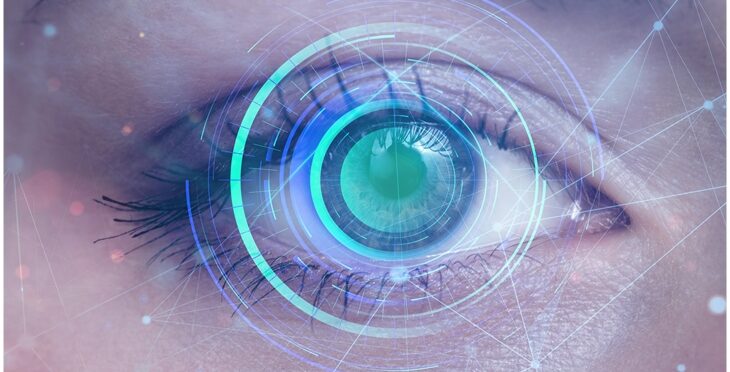Specialist Glaucoma Service Near Me: Advanced Treatment Options
Specialist Glaucoma Service Near Me: Advanced Treatment Options
Blog Article
The Duty of Advanced Diagnostic Tools in Identifying Eye Disorders
In the realm of ophthalmology, the utilization of innovative analysis devices has changed the early recognition and administration of various eye problems. From detecting refined adjustments in the optic nerve to keeping an eye on the progression of retinal conditions, these innovations play a crucial function in enhancing the precision and performance of identifying eye conditions. As the need for accurate and prompt diagnoses remains to expand, the integration of sophisticated tools like optical comprehensibility tomography and visual field screening has become crucial in the realm of eye care. The detailed interaction in between technology and ocular methods not only drops light on complex pathologies yet also opens up doors to customized therapy techniques.
Relevance of Very Early Medical Diagnosis
Early diagnosis plays a pivotal role in the effective administration and treatment of eye disorders. Timely identification of eye conditions is critical as it enables timely treatment, potentially stopping additional progression of the illness and minimizing long-lasting issues. By detecting eye disorders at an early phase, health care suppliers can use suitable treatment plans customized to the certain condition, ultimately resulting in much better results for clients. Early diagnosis enables patients to accessibility needed support services and sources quicker, improving their total high quality of life.

Modern Technology for Finding Glaucoma
Innovative analysis innovations play a critical function in the very early detection and surveillance of glaucoma, a leading reason for permanent loss of sight worldwide. One such innovation is optical comprehensibility tomography (OCT), which offers thorough cross-sectional photos of the retina, enabling for the dimension of retinal nerve fiber layer density. This dimension is necessary in evaluating damage brought on by glaucoma. One more innovative tool is visual field testing, which maps the level of sensitivity of an individual's visual field, assisting to spot any type of areas of vision loss quality of glaucoma. Additionally, tonometry is used to measure intraocular stress, a significant threat variable for glaucoma. This examination is important as elevated intraocular stress can lead to optic nerve damage. Newer innovations like the usage of artificial intelligence formulas in evaluating imaging information are revealing promising outcomes in the very early detection of glaucoma. These sophisticated analysis tools allow eye doctors to detect glaucoma in its onset, permitting for prompt treatment and better administration of the illness to prevent vision loss.
Function of Optical Coherence Tomography

OCT's ability to evaluate retinal nerve fiber layer thickness permits for exact and objective dimensions, assisting in the early discovery of glaucoma even prior to aesthetic field flaws end up being noticeable. Moreover, OCT technology allows longitudinal tracking of architectural modifications gradually, helping with tailored treatment strategies and timely treatments to help maintain patients' vision. The non-invasive nature of OCT imaging additionally makes it a preferred option for checking glaucoma progression, as it can be duplicated regularly without triggering pain to the patient. Generally, OCT plays a crucial function in boosting the analysis accuracy and administration website link of glaucoma, inevitably adding to better results for people at threat of vision loss.
Enhancing Medical Diagnosis With Visual Area Screening
An essential component in comprehensive sensory examinations, visual field testing plays a pivotal function in enhancing the analysis process for different eye conditions. By examining the full extent of a client's visual area, this test provides essential information about the useful honesty of the whole visual pathway, from the retina to the aesthetic cortex.
Aesthetic area testing is particularly valuable in the medical diagnosis and administration of conditions such as glaucoma, optic nerve disorders, and different neurological illness that can affect vision. Through measurable dimensions of peripheral and main vision, medical professionals can discover subtle adjustments that might suggest the presence or progression of these disorders, also before noticeable signs and symptoms happen.
Additionally, aesthetic area testing enables the tracking of treatment effectiveness, helping eye doctors tailor restorative interventions to specific clients. eyecare near me. By tracking adjustments in visual area performance over time, health care service providers can make enlightened decisions concerning changing drugs, suggesting medical treatments, or implementing other ideal measures to protect or improve a patient's aesthetic function
Handling Macular Degeneration

Conclusion
Finally, advanced analysis devices play a crucial role in identifying eye disorders early on. Technologies such as Optical Comprehensibility Tomography and aesthetic area testing have significantly improved the accuracy and efficiency of detecting problems like glaucoma and macular deterioration. Early detection enables timely treatment and administration of these conditions, ultimately leading to better end results for individuals. It is critical for medical care experts to stay upgraded on these innovations to offer the finest possible look after their people. eyecare near me.
Report this page